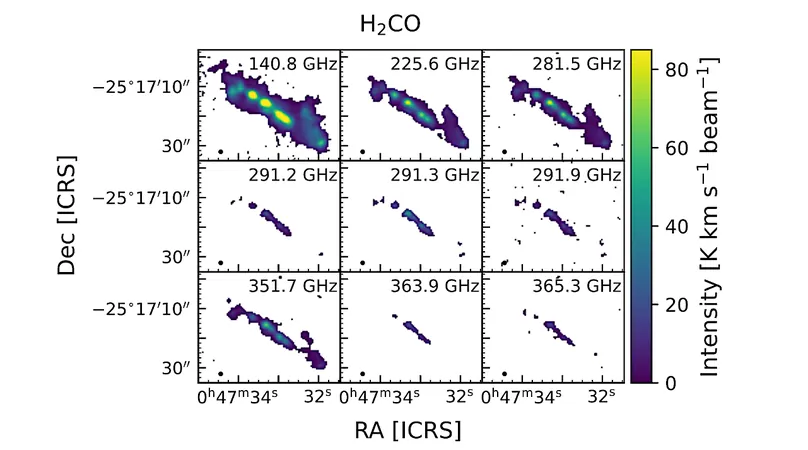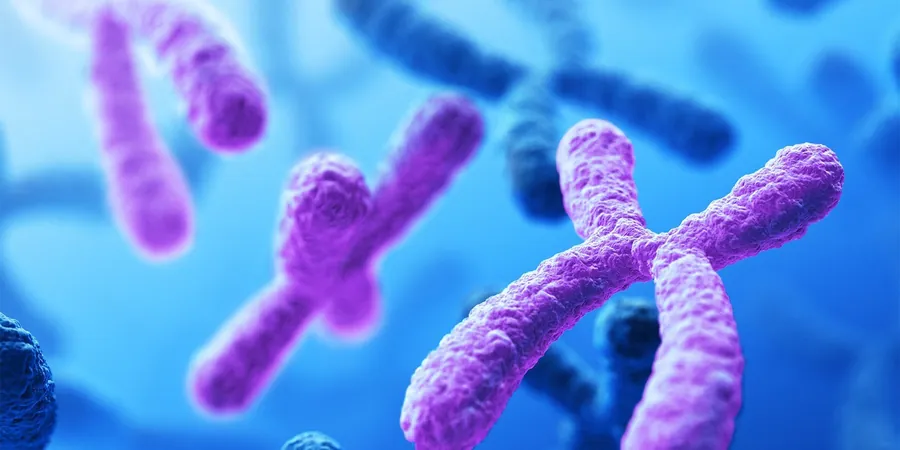
Unlocking the Mysteries of Star Formation: The Surprising Chemistry of H2CO and CH3OH in NGC 253
2025-05-23
Author: Arjun
The Chemical Twins of Star Formation: A Deep Dive
For decades, formaldehyde (H2CO) and methanol (CH3OH) have been the go-to indicators of star formation. New insights from studies expose dramatic differences in the environments where these chemical cousins thrive.
Revealing Secrets of NGC 253's Central Molecular Zone
In an exciting new investigation, researchers have delved into the physical and chemical conditions that foster the emissions of H2CO and CH3OH in NGC 253, a nearby starburst galaxy. Utilizing high-resolution imaging from the cutting-edge ALCHEMI Large Program, they examined intricate data over a vast scale, pinpointing key factors like gas density and temperature across eight giant molecular clouds.
Dueling Environmental Conditions: H2CO vs. CH3OH
The study reveals that these two molecules originate from radically different physical environments. H2CO indicates low gas density coupled with higher kinetic temperatures, while CH3OH demonstrates the opposite, thriving in high-density and cooler settings. What's more, while H2CO levels remain relatively stable across the analyzed regions, CH3OH shows a captivating radial gradient, signaling diverse chemical conditions within the central molecular zone.
Challenging Conventional Wisdom: The Formation Dynamics
These findings upend previous assumptions about the relationship between H2CO and CH3OH. Methanol appears to flourish as a result of warm, dynamic processes rather than traditional cold cloud chemistry, whereas formaldehyde primarily forms through gas-phase reactions. This research underscores the profound influence of starburst-driven phenomena—like shocks, turbulence, and cosmic radiation—on the chemistry of molecular gases.
The Path Ahead for Galactic Chemistry Research
As our understanding of star formation deepens, studies like this one illuminate the intricate dance of chemical processes within galaxies like NGC 253. With each revelation, we get closer to deciphering the cosmos, charting the pathways of star formation through the chemical interactions that lead to the birth of stars.



 Brasil (PT)
Brasil (PT)
 Canada (EN)
Canada (EN)
 Chile (ES)
Chile (ES)
 Česko (CS)
Česko (CS)
 대한민국 (KO)
대한민국 (KO)
 España (ES)
España (ES)
 France (FR)
France (FR)
 Hong Kong (EN)
Hong Kong (EN)
 Italia (IT)
Italia (IT)
 日本 (JA)
日本 (JA)
 Magyarország (HU)
Magyarország (HU)
 Norge (NO)
Norge (NO)
 Polska (PL)
Polska (PL)
 Schweiz (DE)
Schweiz (DE)
 Singapore (EN)
Singapore (EN)
 Sverige (SV)
Sverige (SV)
 Suomi (FI)
Suomi (FI)
 Türkiye (TR)
Türkiye (TR)
 الإمارات العربية المتحدة (AR)
الإمارات العربية المتحدة (AR)